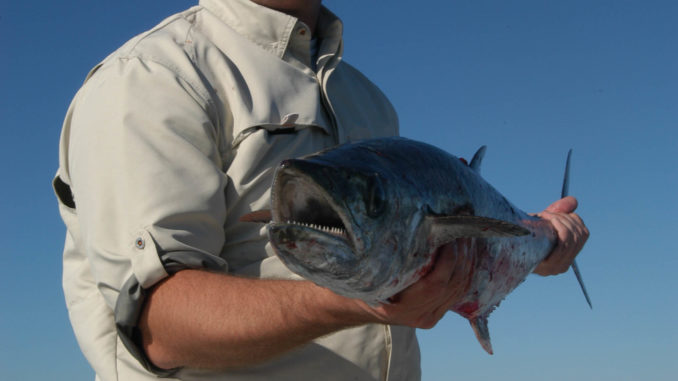
A cold snap in mid-October threw king mackerel fishermen for a loop along the South Carolina coastline. Fortunately, they knew how to respond.
“We had some big changes last week,” said Capt. David Cutler of Low Country Fishing Charters in Little River. “The water temperature dropped more than 10 degrees in three days. It wound up dropping from 77 to 63.
“Two weeks ago, we’d been limiting out within 10 miles of the beach every day.”
But Cutler and other fishermen knew where to look: livebottom and other structure in 60 to 80 feet of water — 20 miles or better off the beach.
This past Wednesday, Cutler steered his 2660 Sailfish to a spot in 80 feet of water, roughly 30 miles southwest of Little River, called the “Clay Hole.” Between that spot and the second spot he tried that was slightly closer to the beach, the “Hammer,” Cutler and his crew hooked up with a dozen kings, along with a false albacore that appeared lost but hungry in deeper, blue water.
“The cold weather has pushed everything ahead about two weeks,” said Cutler, (843-222-7433). “They moved from the beach to 65 feet of water all at once. The bad thing is, even if it warms up, they won’t come back in. They’ve found that 70-degree thermocline, and they’ll stay there all winter.”
But with the big body of kings located, however, the toughest part of a day’s trip — unless the wind’s blowing, seas are rough and the ride off and back are bumpy — is finding bait. Live menhaden, a favorite bait for king mackerel, have been scattered, making collecting the three or four dozen needed for a day on the water a difficut chore.
Cutler found a pod of menhaden off Shallotte Inlet, N.C., just across the state line, and headed offshore with a dozen big menhaden he called “turbo pogeys.”
They worked, and when they were gone, dead cigar minnows slow-trolled also worked. Cutler’s trolling spread included two baits on downriggers, one off the transom just outside the prop wash and two well behind the boat.
All of them produced fish, although over the course of the day, the baits on the downriggers drew a number of sharks.
“They usually move out here about the first of November, and they’ll stay all winter. You’ve just got to find a preyty day to go then,” he said.


